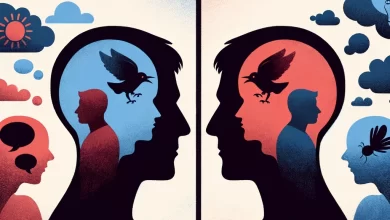Understanding Major Depressive Disorder FAQs
Have you ever wondered what exactly major depressive disorder is and how it impacts people’s lives? Is depression simply a feeling of sadness that will eventually pass? In this article, we will delve into the frequently asked questions about major depressive disorder to shed light on this common mental health condition.
Key Takeaways:
- Major depressive disorder is one of the most common mental disorders in the United States.
- It can seriously impact every aspect of a person’s life, affecting how they feel, think, and handle everyday activities.
- Causes of major depression are unknown, but risk factors include a family history of depression and significant life changes.
- Common signs and symptoms of major depressive disorder include long-term feelings of sadness, hopelessness, and loss of interest or joy.
- Treatment for major depression may involve medication, therapy, or a combination of both.
Common Signs & Symptoms of Major Depressive Disorder
Major depressive disorder (MDD) is a serious mental health condition that affects millions of people worldwide. It is important to recognize the signs and symptoms of MDD in order to seek early intervention and appropriate treatment. Here are some common indicators of major depressive disorder:
- Feelings of sadness, hopelessness, and emptiness: A pervasive and long-lasting sense of despair and low mood.
- Anxiety and irritability: Feeling on edge, restless, and easily agitated.
- Loss of interest or joy in normal activities: Losing pleasure in things that were once enjoyable or fulfilling.
- Changes in appetite and weight: Significant changes in eating habits, leading to weight gain or loss.
- Fatigue and lack of energy: Feeling tired and lacking motivation even after adequate rest.
- Trouble concentrating and making decisions: Difficulty focusing, remembering, or making choices.
- Sleep disturbances: Insomnia or excessive sleep.
- Unexplained aches and pains: Physical discomfort without any underlying medical cause.
- Thoughts of death or suicide: Persistent thoughts about dying or self-harm.
If you or someone you know is experiencing several of these symptoms, it is crucial to seek professional help and support. Major depressive disorder is a treatable condition, and with the right care, individuals can find relief from their symptoms and improve their overall well-being.
Types of Major Depression
Major depressive disorder is a complex mental health condition with various subtypes. Understanding the different types of major depression can help individuals and their loved ones recognize the specific symptoms and seek appropriate treatment.
Postpartum Depression
Postpartum depression, also known as PPD, is a type of major depressive disorder that affects women after childbirth. It is characterized by intense feelings of anxiety, sadness, and hopelessness. PPD can make it challenging for new mothers to care for themselves and their newborns.
Psychotic Depression
Psychotic depression is a severe form of major depression that involves both depressive symptoms and psychosis. People with this subtype may experience delusions or hallucinations, which can significantly impact their perception of reality and overall functioning.
Seasonal Affective Disorder
Seasonal affective disorder, or SAD, is a type of major depression that follows a seasonal pattern. It typically occurs during the winter months when there is less natural sunlight. SAD is characterized by symptoms such as low mood, lack of energy, and increased need for sleep.
Melancholic Depression
Melancholic depression is a subtype of major depression marked by a profound loss of pleasure or interest in almost all activities. People with this form of depression may experience significant weight loss, excessive guilt, and an inability to feel pleasure or enjoyment.
It’s important to note that these types of major depression can coexist with each other or occur independently. Each subtype presents its unique challenges and may require tailored treatment approaches.
Treatment for Major Depression
Even the most severe cases of major depression can be effectively treated with a combination of medication, therapy, or both. Both treatment options play vital roles in improving mental health and providing relief from depressive symptoms.
Medication for Major Depression
Medication, such as antidepressants, is often prescribed to individuals with major depression. These medications work by altering brain chemistry and helping to restore the balance of neurotransmitters responsible for regulating mood.
“Antidepressants can help improve brain chemistry and reduce symptoms of major depression.” – Dr. Sarah Thompson, Psychiatrist
Antidepressants are available in different types, including selective serotonin reuptake inhibitors (SSRIs), serotonin-norepinephrine reuptake inhibitors (SNRIs), tricyclic antidepressants (TCAs), and atypical antidepressants. The choice of medication depends on factors such as the individual’s specific symptoms, medical history, and response to previous treatments.
Therapy for Major Depression
Therapy, also known as talk therapy or psychotherapy, is an essential component of treatment for major depression. It involves meeting with a mental health professional, such as a psychiatrist, psychologist, or licensed therapist, to explore and address the underlying causes and triggers of depression.
Therapy sessions provide individuals with a safe and supportive environment to discuss their thoughts, emotions, and experiences. Through therapy, individuals can gain valuable insights, learn new coping strategies, and develop positive behaviors that promote better mental health and well-being.
“Therapy helps individuals identify triggers, develop positive behaviors, manage stress, set goals, and stick to a treatment plan.” – Dr. Emily Lawson, Psychologist
Early Intervention and Long-Term Management
Early intervention is crucial in the treatment of major depression. The sooner individuals seek help and begin treatment, the better their chances of recovery and symptom management. It is essential to reach out to healthcare professionals who can provide an accurate diagnosis and recommend appropriate treatment options.
Types of Therapy for Major Depression
| Therapy Type | Description |
|---|---|
| Cognitive Behavioral Therapy (CBT) | A type of therapy that focuses on identifying and changing negative thought patterns and behaviors |
| Interpersonal Therapy (IPT) | A short-term therapy that addresses relationship issues and interpersonal conflicts |
| Psychodynamic Therapy | A therapy approach that explores unconscious thoughts and past experiences to uncover the root causes of depression |
| Group Therapy | A form of therapy where individuals with depression interact and support one another in a group setting |
Long-term management of depressive symptoms is essential for maintaining overall mental well-being. It often involves continued therapy sessions, periodic medication adjustments, and the implementation of healthy lifestyle changes, including regular exercise, a balanced diet, and proper sleep habits.
By seeking help, adhering to treatment plans, and making necessary lifestyle changes, individuals with major depression can significantly improve their quality of life and effectively manage their symptoms.
Understanding Depression in Women
Depression is a condition that affects millions of people worldwide, and women are particularly vulnerable to experiencing its effects. Studies have shown that depression is more prevalent in women than in men, with about 20 percent of women experiencing at least one episode of depression in their lifetime. This gender disparity raises important questions about the factors that contribute to depression in women.
Various factors contribute to women’s increased risk for depression, including biological, hormonal, life cycle, and psychosocial factors. Hormonal changes, such as those occurring during puberty and menopause, can impact brain chemistry and emotions, making women more prone to depression.
“Women experience unique life events and challenges that can contribute to the development of depression. These include hormonal fluctuations during puberty, menstruation, pregnancy, and menopause, as well as the stressors associated with caregiving responsibilities, work-life balance, and social expectations.”
Understanding the specific risk factors and triggers for depression in women is crucial for effective diagnosis and treatment. By recognizing the gender-specific aspects of depression, healthcare professionals can tailor interventions and support systems to address women’s unique needs.
Biological Factors
Biological factors play a significant role in the development of depression in women. Research suggests that women have a greater genetic predisposition to depression, which may be influenced by hormones, brain structure, and chemistry. Furthermore, female hormones, such as estrogen and progesterone, can impact mood regulation and contribute to the onset of depressive symptoms.
Life Cycle Factors
The different stages of a woman’s life can present specific challenges and stressors that contribute to depression. Puberty, pregnancy, postpartum period, perimenopause, and menopause are all stages associated with significant hormonal changes and transitions. These hormonal fluctuations, combined with societal expectations and various life stressors, can increase the risk of developing depression.
Psychosocial Factors
The social and psychological aspects of a woman’s life can also contribute to depression. Factors such as gender inequality, social roles, and expectations, relationship conflicts, domestic violence, and socioeconomic disparities can all play a role in the development of depressive symptoms. Addressing these psychosocial factors is essential for comprehensive treatment and support.
It is important to recognize that depression is a complex condition, and each individual’s experience may differ. By understanding the specific challenges faced by women, healthcare professionals can provide more targeted and effective interventions. Additionally, raising awareness about depression in women helps reduce stigma, encourages early intervention, and promotes access to appropriate care.
| Risk Factors for Depression in Women | Contributing Factors |
|---|---|
| Biological | Hormonal fluctuations, brain chemistry, genetics |
| Life Cycle | Puberty, pregnancy, postpartum period, perimenopause, menopause |
| Psychosocial | Gender inequality, social roles, relationship conflicts, domestic violence, socioeconomic disparities |
Postpartum Depression (PPD)
Postpartum depression is a condition that affects women after giving birth. It is estimated that around 20% of new mothers experience some form of postpartum depression. This condition is characterized by intense feelings of sadness, anxiety, and exhaustion, which can significantly impact a woman’s daily life and ability to care for her baby.
The hormonal and physical changes that occur during pregnancy and childbirth, combined with the demands of caring for a newborn, contribute to the development of postpartum depression. The sudden drop in hormone levels after delivery, particularly estrogen and progesterone, can trigger changes in brain chemistry and lead to depressive symptoms.
Unlike the “baby blues,” which are common and generally resolve within a few weeks, postpartum depression can last for several months or longer if left untreated. It is important to distinguish between the two conditions as postpartum depression requires active treatment and emotional support.
“Postpartum depression is a serious and treatable condition that affects many women after giving birth. It is crucial to recognize the signs and symptoms early on so that appropriate support and intervention can be provided.”
Some common signs and symptoms of postpartum depression include:
- Intense feelings of sadness, worthlessness, or guilt
- Severe mood swings
- Extreme fatigue and lack of energy
- Difficulty bonding with the baby
- Changes in appetite and sleep patterns
- Feeling overwhelmed and unable to cope
If you or someone you know is experiencing these symptoms, it is important to talk to a healthcare provider. Postpartum depression can be successfully treated with a combination of therapy, support groups, and in some cases, medication.
Support from loved ones, including partners, family members, and friends, is also vital in helping women recover from postpartum depression. Creating a nurturing and understanding environment can significantly improve a woman’s well-being and facilitate her journey to recovery.
Preventing Postpartum Depression
While postpartum depression cannot always be prevented, there are steps that women can take to reduce their risk:
- Seek prenatal care early and maintain regular check-ups throughout pregnancy.
- Stay connected with supportive friends and family members.
- Get enough sleep and rest whenever possible.
- Delegate tasks and ask for help when needed.
- Engage in regular physical activity.
- Eat a healthy and balanced diet.
- Attend postpartum support groups or join online communities.
By taking proactive measures and seeking support, women can better navigate the challenges of postpartum depression and ensure the well-being of themselves and their babies.
Remember, postpartum depression is a common and treatable condition. Seeking help is not a sign of weakness, but a proactive step towards recovery.
Depression and Menopause
Menopause, the absence of menstrual periods for 12 months, can be a challenging time for some women, as it may coincide with an increased risk for depression. During menopause, the hormone levels in a woman’s body undergo significant fluctuations, which can impact brain chemistry associated with depressive illness.
Researchers are actively studying the ways in which these hormonal and brain changes during menopause may contribute to depression in women. It is believed that the decline in estrogen levels can affect neurotransmitters in the brain that regulate mood, such as serotonin and norepinephrine. These hormonal shifts, combined with other factors like genetic predisposition and life stressors, can increase the vulnerability to developing depression during menopause.
It’s important for women going through menopause to be aware of the potential risk for depression and to seek timely support and treatment. With early intervention, depression symptoms can be effectively managed, improving overall well-being and quality of life.
Treatment-Resistant Depression
Treatment-resistant depression refers to cases of major depressive disorder that do not respond to standard treatments, such as antidepressant medications and therapy. For individuals struggling with treatment-resistant depression, it can be disheartening to find little relief from traditional approaches. However, there are alternative treatments available for consideration.
Alternative treatments for treatment-resistant depression include:
- Electroconvulsive therapy (ECT): ECT involves a series of controlled electric shocks that are administered to the brain under anesthesia. This procedure has been shown to be effective in reducing symptoms of severe depression in many cases.
- Repetitive transcranial magnetic stimulation (rTMS): rTMS utilizes magnetic fields to stimulate specific areas of the brain. It is a non-invasive procedure that has shown promise in treating treatment-resistant depression.
- Deep brain stimulation (DBS): DBS involves the implantation of electrodes in specific regions of the brain to modulate abnormal brain activity. This technique is still being researched but has shown potential as a treatment option for severe depression.
- Vagus nerve stimulation (VNS): VNS involves the implantation of a device that stimulates the vagus nerve, which connects the brain with various organs in the body. This treatment has been approved for use in treatment-resistant depression.
It’s important to note that these alternative treatments should only be considered after assessing the individual’s specific needs and in consultation with a mental health professional. Each treatment comes with its own benefits, risks, and potential side effects, and the appropriateness of each option will vary depending on the individual’s circumstances.
For individuals experiencing treatment-resistant depression, it’s crucial to have open and honest discussions with their healthcare provider to explore all available options and develop a personalized treatment plan. Together, the individual and their healthcare team can work towards finding the most effective approach to managing their depression and improving quality of life.
Conclusion
Living with major depressive disorder can be challenging, but with the right treatment and support, individuals can manage their symptoms and lead fulfilling lives. It is important to seek help from healthcare professionals and to develop a comprehensive treatment plan that may include medication, therapy, and lifestyle changes. Remember, you are not alone, and there are resources available to support you in your journey to overcome depression.






